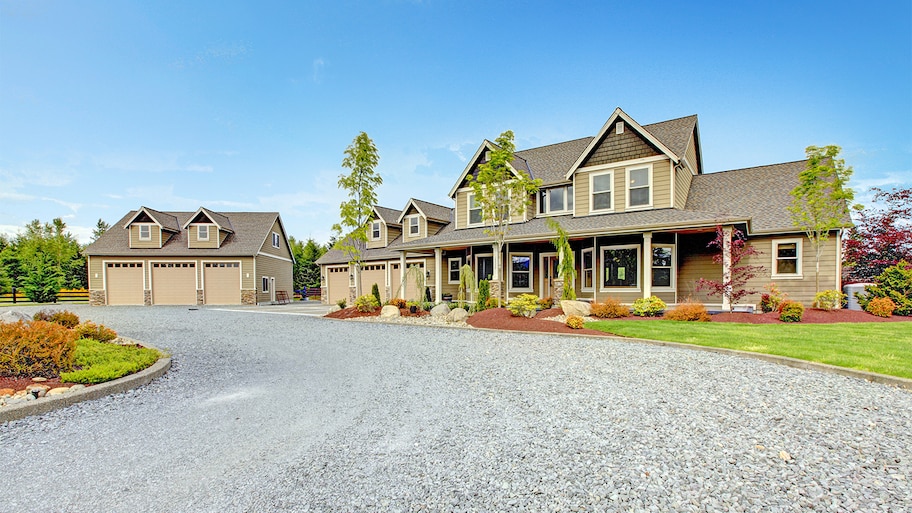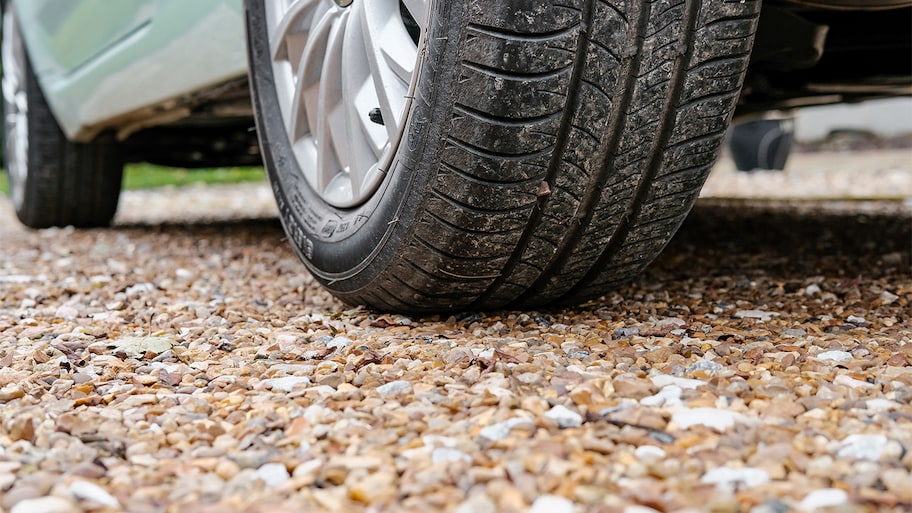8 Tips for Maintaining a Gravel Driveway
Gravel driveways are attractive and affordable but require regular maintenance to keep in tip-top shape


Gravel driveways can be a practical and affordable option for homeowners, but maintaining your gravel driveway is key to keeping it in the best of shape. Gravel driveways cost less than asphalt or cement and come in a variety of colors and textures that can add curb appeal to your property. To make sure your driveway stays looking its best, check out these eight tips.
1. Ensure Proper Grading for Your Gravel Driveway
To keep your gravel driveway looking its best, start with proper grading. Maybe you’re installing a new gravel driveway or repairing one that’s paid for itself many times over. Either way, making sure it's properly graded and level will prevent any issues from arising over time.
Flattening your gravel driveway’s base layer completely can eventually lead to problems with pooling water. When grading your driveway, be sure it slopes at the sides to create a crown, and then feather the gravel out slightly to the driveway’s edges, away from your home or garage.
2. Watch for Pooling Water or Drainage Issues
Pooling water and poor drainage can lead to ruts and erosion of your gravel driveway. If you notice low areas where water pools after a rainstorm, you will want to add gravel to those areas. Be sure to compact the stone thoroughly, but keep it a bit higher than the surrounding area, so rainfall runs off. You could also dig a ditch off to the side of your driveway to pull water off and away from any low spots.
3. Check For Potholes, Ruts, or Bulges in Your Driveway
Bulging rocks or tree stumps, ruts, and potholes naturally form on driveways and worsen drainage problems. Besides, no one likes a bumpy ride through a maze of ruts and potholes, especially on their driveway. The best solution is to fix them as they happen rather than letting them grow into a larger, deeper problem that will eventually be too big to ignore.
Make your driveway fit to drive on again by digging out any large tree roots or rocks and adding new gravel in layers, compacting the stone thoroughly after each layer. In the same way, if you live in an area with harsh winters, and you use a snowblower to clear the snow from your driveway, come spring, you may notice ruts and grooves in the gravel. Rake the displaced gravel into the ruts and compact the stone completely, just like above.
4. Lay Down a Layer of Landscaping Fabric
If your gravel driveway is older or the ruts and holes are small but too much to handle, you may want to think about laying down a new top layer of gravel. But before you do, consider adding landscaping fabric under the new layer.
You can cut landscaping fabric to the dimensions of your driveway. Custom cutting keeps grass and weeds from growing underneath the stone and gravel. Landscaping fabric comes in various thicknesses and can cost between $20 and $70 per 100-foot roll.
5. Avoid Using a Snow Plow
The heavy weight, coupled with the aggressive scraping of a snow plow, can dislodge gravel and create holes and uneven surfaces on your driveway, potentially leading to costly problems for both your car and your driveway down the road. Instead, use a snowblower or a shovel to clear snow from the driveway whenever possible.
If you need to use a plow, make sure to set the blade so that it’s high enough to avoid direct contact with the gravel. This will help you remove the snow without disturbing the gravel’s foundation.
6. Spray the Gravel Driveway
Spraying a gravel driveway a few times per month during dry weather can help you minimize dust and keep the gravel in place. It can also help to reduce wear and tear on the driveway. Just be sure to use a mist or light spray setting on your hose to avoid disrupting the gravel and creating holes, which can lead to damage.
7. Choose the Best Materials

If, over time, you want to change your gravel driveway’s color or texture, you have options. Gravel for driveways comes in a variety of colors and textures, from crushed shale and granite to concrete or limestone. Choosing the top layer—or the layer that shows—can be both visually attractive and suit your home’s style.
This top layer's crushed stones are about the size of peas or marbles and cost between $4 and $8 per bag. Most pros advise against using round stones as they can shift easily and make your driveway hard to walk on safely. Instead, use #57 stones—also called dense grade or traffic-bound gravel—that fit closely together while still allowing for proper drainage. As you use your driveway, the rocks and rock particles will act like an adhesive and bond the gravel for a level surface.
8. Adopt a Long-Term Solution
Fixing small ruts and potholes to lessen the chance of pooling water or drainage problems in your gravel driveway is possible for a DIYer. But when things get out of hand or by the time you fix one issue and another one crops up, you may want to call out the big guns.
Long-term solutions usually call for big tools. A rake and shovel can solve many problems, but to reduce dust, compact the gravel, and form a smooth surface, you’ll likely need to rent or buy some tools and equipment.
Gravel costs an average of $1 per square foot. If you choose crushed stone or limestone, you might pay about $2.50 per square foot. You can rent a manual tamper to compact gravel for about $10 per day, or you could use a vibratory plate compactor or jumping jack, which rent for around $80 to $85 per day.
DIY vs. Hiring a Pro to Fix Your Gravel Driveway
Given that professional repair of your driveway costs between $1.25 and $1.80 per square foot, you can save money (and time!) by fixing a gravel driveway yourself. However, if you need to make major repairs, like regrading the driveway, and you lack the necessary equipment and expertise, hiring a pro is the most efficient and effective option.
Consider reaching out to multiple pros before deciding on one so you can find the best fit and price for your project.
Kathryn Pomroy contributed to this piece.
